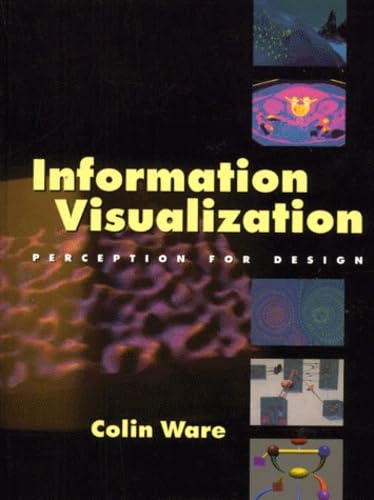This is the first book to combine a strictly scientific approach to
human perception with a practical concern for the rules governing the
effective visual presentation of information. Surveying the research
of leading psychologists and neurophysiologists, the author isolates
key principles at work in vision and perception, and from them, derives
specific, effective visualization techniques, suitable for a wide range
of scenarios. You can apply these principles in ways to optimize how
others perceive visual information-resulting in improved clarity,
utility, and persuasiveness. Likewise, you can apply them to your
own exploratory data analyses to develop display strategies that
make data patterns and their significance easier to discern.
Information Visualization transcends the often-divergent approaches to
visualization taken by individual disciplines. It will prove a
fascinating, practical resource for anyone who uses graphical
presentation as a key to successful analysis and communication:
graphic artists, user interface/interaction designers, financial
analysts, data miners, and managers faced with information-intensive
challenges.
* Brings current scientific insight to the study of data visualization.
* Explains multiple facets of visual perception: color, organization, space, motion, texture, and the relationship between images and words.
* Explores strategies for designing glyphs and icons to optimize a GUI's effectiveness and ease of use.
* Examines the distinctions between word-based and image-based perception and develops guidelines for choosing between verbal and graphical communication approaches.
* Presents successful techniques for displaying geographical and other data in multiple layers.
* Offers rules for designing easily navigable data spaces in VRML.
* Supports points with numerous illustrations, including over thirty color images.
The author takes the "visual" in visualization very seriously.
Colin Ware has advanced degrees in both computer science (MMath, Waterloo) and the psychology of perception (Ph.D., Toronto). He has published over a hundred articles in scientific and technical journals and at leading conferences, many of which relate to the use of color, texture, motion, and 3D in information visualization. In addition to his research, Professor Ware also builds useful visualization software systems. He has been involved in developing 3D interactive visualization systems for ocean mapping for over twelve years, and he directed the development of the NestedVision3D system for visualizing very large networks of information. Both of these projects led to commercial spin-offs. Professor. Ware recently moved from the University of New Brunswick in Canada to direct the Data Visualization Research Laboratory at the University of New Hampshire.
